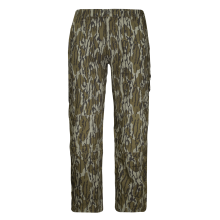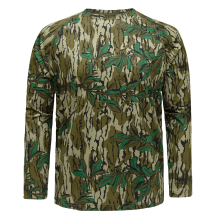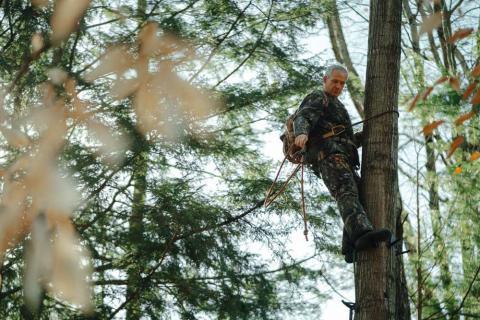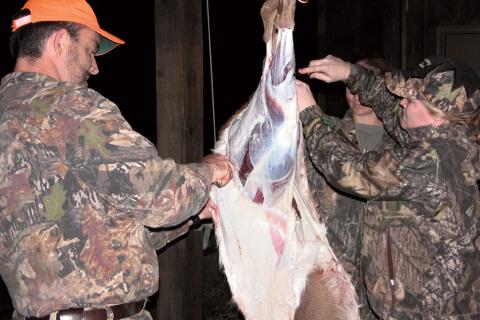Bart K. Davis

If you’ve ever felt the unmistakable thump of a flounder strike on the end of your line, you know the thrill of targeting these delicious and elusive flatfish. Found along the entire Atlantic seaboard, flounder are a favorite target for inshore anglers. But landing these ambush predators consistently takes more than luck, something I learned growing up on the marshes and sounds of southeastern North Carolina. Fortunately, these tips and techniques will work virtually anywhere, from Virginia through Florida and the Gulf Coast. Here’s how to up your game with time-tested techniques that work up and down the East Coast.
Understand the Target Species
Flounder are masters of camouflage, lying flat against the seabed while waiting to ambush prey like shrimp, minnows, and small crabs. They prefer sandy or muddy bottoms near structure—think channel edges, bridge pilings, grass lines, and oyster beds. In spring and summer, flounder migrate inshore to bays and estuaries to feed and spawn. As temperatures drop in fall, they move offshore to deeper water. Knowing their seasonal habits helps you target the right spots at the right times.
Flounder are opportunistic feeders, and tidal movement plays a major role in their activity. Your best shot is during a moving tide, especially the start of the outgoing tide when baitfish are more likely to be swept from cover into deeper channels. It’s best to avoid fishing at slack tide when the water is still and baitfish are inactive. Early morning and late afternoon usually yield the best results, particularly during hot summer days.
Master the Drift
Drifting is one of the most effective techniques, especially in tidal creeks, sounds, and inlet mouths. As your boat moves naturally with the current, your bait or lure covers more ground and mimics injured prey. Look for transitions—edges where sand meets rock, drop-offs, channel edges, grass lines, and bridge pilings. Flounder use these areas to ambush prey moving with the tide.
If you’re shore fishing or on a pier, cast parallel to the shoreline or structure and work your bait slowly along the bottom. Pay attention to where you get bites—flounder often stack in the same small pockets.
I prefer a Carolina rig with just enough weight to stay on the bottom, with a round egg sinker on the main line, a small black barrel swivel and about 18 inches of fluorocarbon leader. For hooks, I like the Kahle shape in sizes to fit the bait. And while I love using circle hooks for most species, they are not great for flounder fishing–more on that in a minute.
Tip the hook with live bait—mud minnows, finger mullet or squid strips are favorites. Keep the bait bouncing just above the bottom to stay in the strike zone. Remember that these are ambush predators, so if the bait is off the bottom too far then they won’t bite.
Bucktail jigs tipped with Gulp! baits, curly-tail grubs, or squid strips are also deadly for flounder. Work them slowly across the bottom with short hops and pauses to mimic a wounded baitfish, again keeping the lure right along the structure.
Color matters: white, pink, and chartreuse are consistent producers. In murky water, brighter colors stand out better; in clear water, go for natural shades like brown or olive.
Tandem rigs—two jigs spaced about a foot apart—can double your odds and appeal to aggressive fish.

Don’t Rush the Hookset
Flounder are ambush predators, but they aren’t always aggressive strikers. Often, they’ll grab the bait and hold it in their mouth before swallowing. If you swing too early, you’ll miss the hookset—or worse, pull the bait out of their mouth. That’s why circle hooks aren’t as effective, since they require the fish to turn and move off in order to set in the corner of the jaw.
Instead, when you feel that initial “tap,” resist the urge to yank. Lower your rod tip slightly, give the fish a couple of seconds to commit, then reel down and set the hook with a smooth, firm motion.
Even with solid tactics, beginners often make simple mistakes that cost them fish. Here are some to avoid:
● Fishing too fast: Flounder are bottom-huggers and often need a slow, deliberate presentation. Ripping your lure through the water column won’t give them a chance to strike.
● Using too much weight: Heavy sinkers may keep your bait down but reduce natural movement and can spook fish. Use the lightest weight that still maintains bottom contact.
● Ignoring structure: Casting randomly into open water won’t get you far. Always target features like ledges, drop-offs, or current seams where flounder lie in ambush.
● Setting the hook too soon: As mentioned, flounder need a moment to fully take the bait. Patience is key.
● Fishing at slack tide: Water movement is crucial. If the tide isn’t flowing, the fish usually aren’t feeding.
Flounder fishing along the East Coast offers a blend of challenge, strategy, and tasty rewards. Whether you're casting from a Carolina creek bank or drifting a Florida inlet, the key is understanding the fish and adapting your presentation.






























